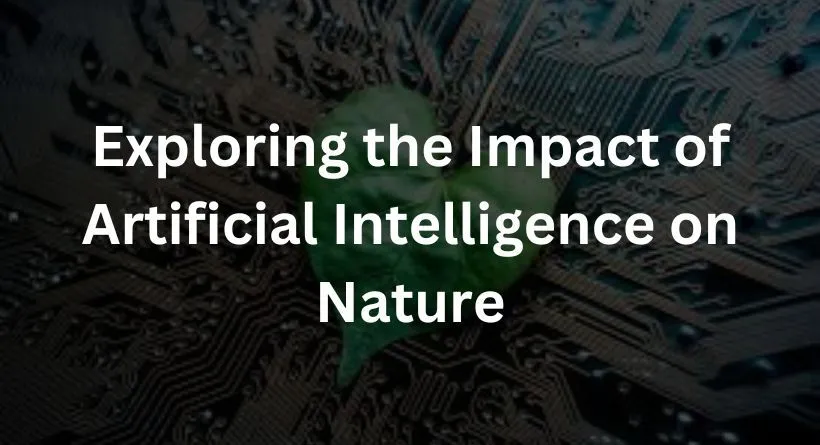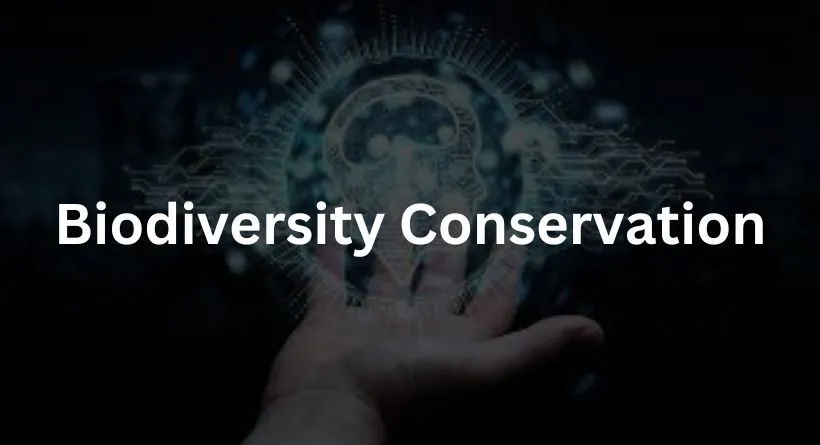
Artificial Intelligence (AI) has rapidly become an integral part of our daily lives, revolutionizing various industries such as healthcare, finance, and entertainment. Beyond the realms of human-made environments, AI is also making significant strides in understanding and interacting with the natural world. This article delves into the burgeoning field of AI in nature, exploring its applications, benefits, and potential implications.
Biodiversity Conservation

AI Revolutionizing Biodiversity Conservation
One of the foremost applications of AI in nature is in the realm of biodiversity conservation. With the help of advanced machine learning algorithms, researchers and conservationists can analyze vast amounts of ecological data to monitor and protect endangered species. AI-powered tools can identify and track animals through image recognition, acoustic monitoring, and satellite data, aiding in the creation of effective conservation strategies.
You may also like reading: Will AI Replace Humans? The Impact of Artificial Intelligence on the Human World
Precision Agriculture
Transforming Agriculture Through AI
AI is transforming traditional agriculture into a more sustainable and efficient practice. Precision agriculture, empowered by AI technologies, allows farmers to optimize resource use, minimize environmental impact, and increase crop yields. Smart sensors, drones, and AI algorithms analyze data on soil composition, weather patterns, and crop health, providing farmers with real-time insights to make informed decisions.
Climate Change Research
AI’s Role in Addressing Climate Change
Understanding and mitigating the impacts of climate change is a critical global challenge. AI is playing a crucial role in climate change research by processing vast datasets to model and predict climate patterns. Machine learning algorithms can analyze historical climate data, identify trends, and make predictions about future changes. This aids scientists and policymakers in developing strategies to address and adapt to the evolving climate.
Wildlife Monitoring and Poaching Prevention
Protecting Wildlife with AI
AI technologies contribute significantly to wildlife monitoring and poaching prevention efforts. Drones equipped with AI-powered cameras can patrol protected areas, detect unusual activities, and alert authorities to potential threats. Machine learning algorithms can distinguish between normal animal behavior and suspicious activities, facilitating rapid response to illegal activities such as poaching.
Ecological Restoration
AI’s Role in Restoring Degraded Habitats
In the face of habitat degradation and deforestation, AI is emerging as a powerful tool for ecological restoration. Machine learning algorithms can analyze ecosystem dynamics and recommend strategies for restoring degraded habitats. This includes identifying suitable plant and animal species for rewilding efforts, optimizing reforestation plans, and monitoring the progress of restoration projects.
Citizen Science and Data Collection
Democratizing Scientific Research with AI
AI has democratized scientific research by involving the general public in data collection and analysis through citizen science initiatives. Mobile apps and platforms equipped with AI algorithms allow users to contribute to environmental monitoring projects. This crowdsourced data helps scientists gather information on a larger scale and gain insights into ecological patterns and changes.
Challenges and Ethical Considerations

Balancing AI Advancements and Ethics
While the integration of AI in nature brings numerous benefits, it also poses challenges and ethical considerations. Privacy concerns, data security, and the potential misuse of AI in wildlife surveillance are important issues that require careful consideration. Striking a balance between technological advancements and ethical considerations is crucial to ensure the responsible and sustainable use of AI in the natural world.
Conclusion
Artificial Intelligence is a powerful ally in our efforts to understand and protect the natural world. Its applications in biodiversity conservation, precision agriculture, climate change research, wildlife monitoring, ecological restoration, and citizen science are transforming the way we interact with and preserve nature. However, it’s essential to address the ethical concerns and privacy issues to ensure that AI’s integration in nature remains sustainable and responsible.
FAQs
1. How does AI help in biodiversity conservation?
AI aids in biodiversity conservation through advanced algorithms that analyze ecological data and track endangered species, enabling effective conservation strategies.
2. What is precision agriculture, and how does AI contribute to it?
Precision agriculture involves optimizing resource use and crop yields. AI, through smart sensors and drones, provides real-time insights into soil composition and crop health, helping farmers make informed decisions.
3. What role does AI play in climate change research?
AI processes vast datasets to model and predict climate patterns, aiding scientists and policymakers in addressing and adapting to climate change.
4. How does AI assist in wildlife monitoring and poaching prevention?
AI-powered drones and machine learning algorithms patrol protected areas, detect unusual activities, and distinguish between normal animal behavior and suspicious activities, facilitating rapid response to poaching threats.
5. What is citizen science, and how does AI democratize it?
Citizen science involves the general public in data collection and analysis. AI-equipped mobile apps and platforms allow users to contribute to environmental monitoring projects, providing valuable insights on a larger scale.





